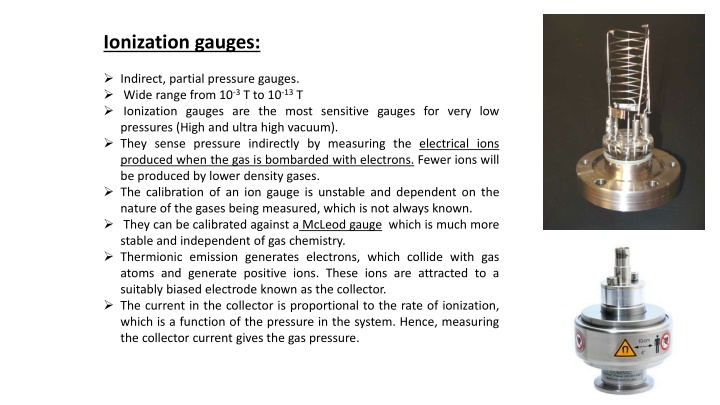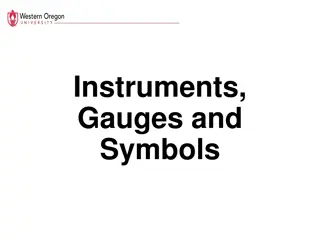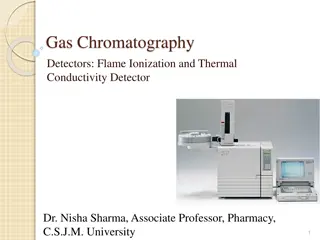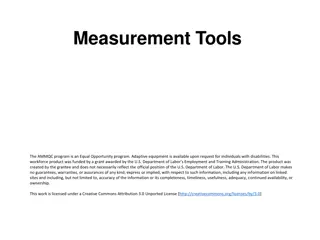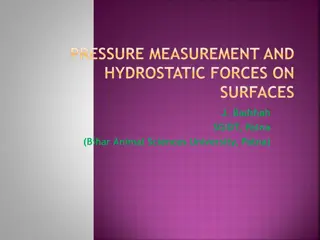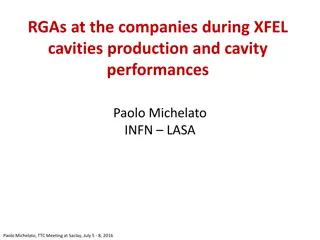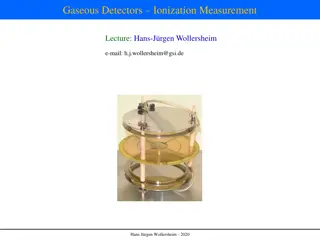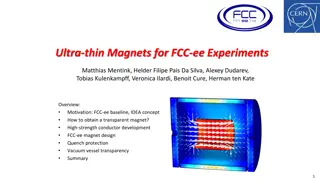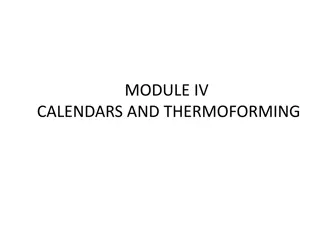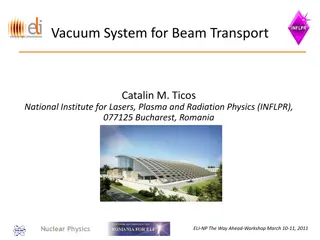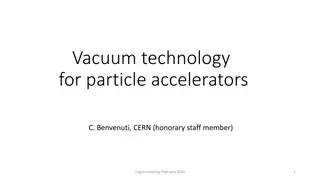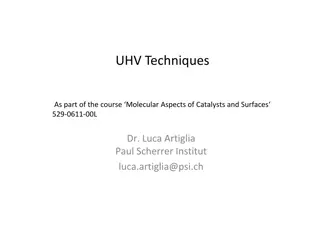High Sensitivity Ionization Gauges for Ultra High Vacuum
Partial pressure gauges, such as ionization gauges, provide wide range measurement capabilities from 10^-3 to 10^-13 Torr. These gauges are particularly sensitive in high and ultra-high vacuum applications. Ionization gauges indirectly detect pressure by measuring ion currents, offering unmatched precision for very low pressures.
Download Presentation

Please find below an Image/Link to download the presentation.
The content on the website is provided AS IS for your information and personal use only. It may not be sold, licensed, or shared on other websites without obtaining consent from the author.If you encounter any issues during the download, it is possible that the publisher has removed the file from their server.
You are allowed to download the files provided on this website for personal or commercial use, subject to the condition that they are used lawfully. All files are the property of their respective owners.
The content on the website is provided AS IS for your information and personal use only. It may not be sold, licensed, or shared on other websites without obtaining consent from the author.
E N D
Presentation Transcript
Ionization gauges: Indirect, partial pressure gauges. Wide range from 10-3 T to 10-13 T Ionization gauges are the most sensitive gauges for very low pressures (High and ultra high vacuum). They sense pressure indirectly by measuring the electrical ions produced when the gas is bombarded with electrons. Fewer ions will be produced by lower density gases. The calibration of an ion gauge is unstable and dependent on the nature of the gases being measured, which is not always known. They can be calibrated against a McLeod gauge which is much more stable and independent of gas chemistry. Thermionic emission generates electrons, which collide with gas atoms and generate positive ions. These ions are attracted to a suitably biased electrode known as the collector. The current in the collector is proportional to the rate of ionization, which is a function of the pressure in the system. Hence, measuring the collector current gives the gas pressure.
Types: Ionization gauges are divided into following two types based on the method of production of electrons. Under these two types we are going to study following types: Cold cathode ionization gauges. penning gauge Magnetron gauge Inverted magnetron gauge Hot cathode ionization gauges. Conventional type. Bayard Alpert gauge
Cold cathode ionization gauges: Penning gauge: Essential points: Indirect, partial pressure gauge. Range:10-3 T to 10-8 T. Two cathodes and a central anode. Cold discharge. Role of magnetic field. Ionization current. Calibration curve. https://youtu.be/TG9vtKK-LLw
Magnetron gauge: Essential points: Indirect partial pressure gauge. Range: 10-2 T to 10-9 T. In the magnetron gauge, the anode is an open cylinder with the cathode on axis and as endplates. The end discs of the of the cathode are shielded from high electric fields by two annular rings held at cathode potential. In these gauges the electrons are trapped more efficiently than in the original Penning design.
Inverted magnetron gauge: Essential points: Indirect, partial pressure gauges. Range:10-2 T to 10-9 T. In the inverted magnetron gauge the anode is a rod in the axis of an almost closed cylinder as cathode. One of the important features in the inverted magnetron gauge (IMG) is the use of guard rings held at cathode potential to prevent field emission currents from the cathode to the anode. The magnetic field is parallel to the anode axis. This gauge can be operated up to 6 kV with 0.2 Tesla.
Hot cathode ionization gauges: Conventional type: Important points: Indirect, partial pressure gauges. Range:10-3 T to 10-9 T. Grid potential: +150V to +300V. Collector Potential: -20V to -50V. Emitted electrons possesses a K.E, of around 100eV. The low pressure limit is set by production of X rays in collector anode, which in turn produces more ions. So collector current becomes independent of pressure. High pressure limit at around 10-2 T is set by glow discharge. https://en.wikipedia.org/wiki/Hot- filament_ionization_gauge
Bayard-Alpert gauge: https://www.thinksrs.com/downloads/pdfs/applicationnotes/IG1BAGapp.pdf https://www.thinksrs.com/downloads /pdfs/applicationnotes/IG1BAGapp.pd f In order to push the lower limit further down, the geometry of the gauge is reversed. The modified version is called Bayard-Alpert gauge. Because in this configuration, total area of the collector available for X-ray production is reduced as a result lower limit will be reduced to 10-13 T.
